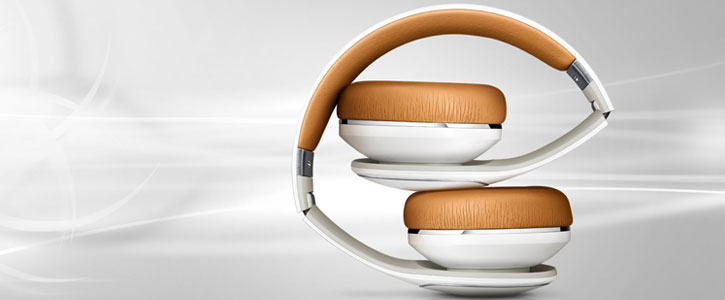
Shop Headphones >
Headphones are very much the product of 2017. You see them everywhere. On the train, in the street, nipping round Tescos… there are even Silent Discos where everyone dances around listening to their own headphone music!
There doesn’t seem to be an age barrier either, young and old, everyone’s plugging in and turning up the volume.
But let’s face it, listening to music or an audio book has never been easier. You no longer need a separate device, your full audio library is there in your pocket, uploaded to your phone, and taken everywhere you go, to listen to at your convenience.
However, with increased popularity comes increased choice, and for the buyer — increased confusion. So with this headphones buying guide we want to break through the tech specs and give you the skinny on everything you need to know about headphones, whether you’re buying for yourself or for someone else. And by the end of this page we promise you’ll know your in-ear from your on-ear.
So lets have a look at the different styles, functionality and specs available with headphones.
The different styles
On-ear headphones
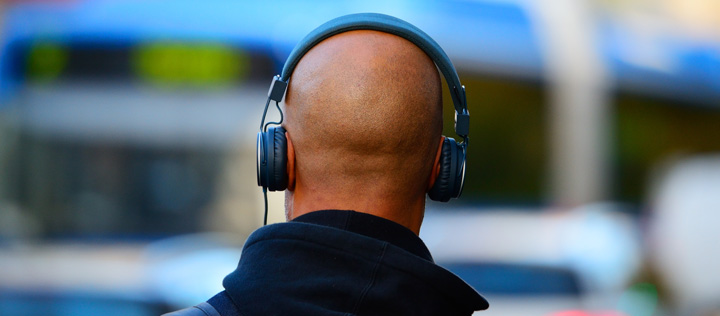
Also known as: Over-ear headphones, padded headphones or ear pad headphones.
On-ear headphones sit lightly on top of your ears. They usually feature soft ear pads that cover but don’t completely envelope your ear. The ear pads are connected by a band that wraps around the top of your head. They’ve become increasingly fashionable in recent years.
Pros: Fantastic sound quality. They’re comfortable to wear. They allow outside sound to enter the ear, which can be a pro if you’re a bike rider or jogger and need awareness of your surroundings.
Cons: Noise is leaked, so people nearby can hear your music. The bass is a lower quality when compared to full-size headphones.
In-ear headphones
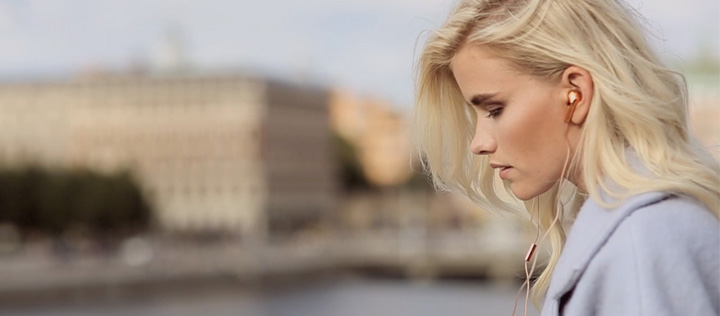
Also known as: Earbuds, earphones or if you’re Apple, EarPods.
In-ear headphones are usually the default style that accompany your new phone. They’re slightly more discreet and can be inserted directly into your ear canal. Better quality in-ear headphones often having a rubber bud for comfort and improved sound. You can even get wireless earbuds that have literally no wires at all — cool.
Pros: They’re small, lightweight and easy to carry. They isolate external noise well. They don’t interfere with your hairstyle.
Cons: They’re not as bassy and the sound quality is often lower than full size headphones. They get tangled easily.
Full size headphones

Also known as: Closed-back headphones, circumaural headphones or over-the-ear headphones.
Full size headphones are similar to on-ear headphones but bigger. They envelope the entire ear and usually have a closed back. They offer excellent sound quality.
Pros: Closed headphones offer a high quality sound and punchy bass. Better comfort for long-term use. Block outside noise. Can double-up as ear muffs during winter.
Cons: Due to their bigger size they’re more difficult to carry round with you.
Functionality
Wireless headphones
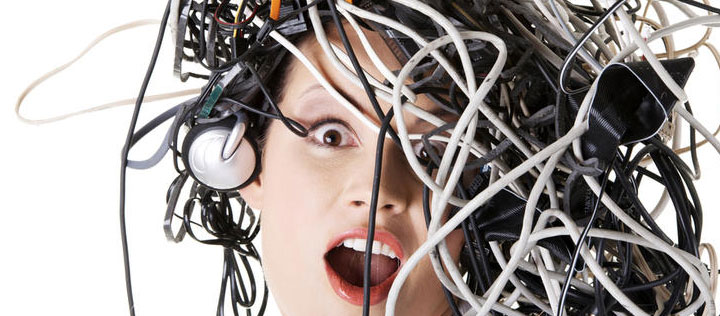
Also known as: Transmitter headphones.
Wireless headphones enable you to connect to your phone, stereo or TV without wires. So if you want to dance around your living room, flailing your arms about like Kate Bush, you can do so without having to worry about getting tangled up or moving too far from your device.
How do they work? Well, as if by magic, your device will process audio and transmit it via Bluetooth or a USB dongle, towards your headphones for your listening pleasure. If you have wireless earbuds, each bud will communicate over Bluetooth to ensure synchronised playback.
Pros: You have the freedom to move wherever the rhythm takes you. Tangles are averted.
Cons: The sound performance is reduced with budget headphones. When their battery goes flat you can’t listen to your music.
Sports headphones
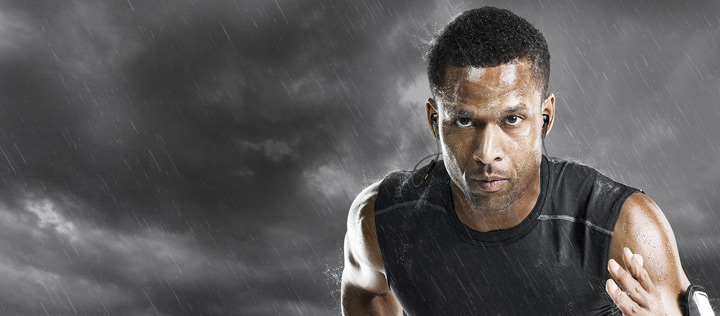
Also known as: Running headphones.
A pair of sports headphones can be the perfect training partner. Listening to the right music can pump you up and keep you motivated when the lactic acid starts to burn.
Plus, no matter how jaunty your run they will stay firmly in place. So you don’t have to worry about them falling off or out of your ears. You can concentrate on your activity and maximise your performance.
Sports headphones are usually available in the style of in-ear headphones and certain models will also include around ear hooks for an extra secure fit.
So that you can exercise in all weathers… if you live in the UK you’ll know what I mean here… sports headphones are also water, rain and sweat resistant.
Pros: Secure fit. Better comfort when exercising. Weather resistant.
Cons: Cheap, non-wireless headphones’ connections may come loose.
Noise cancelling / isolating headphones
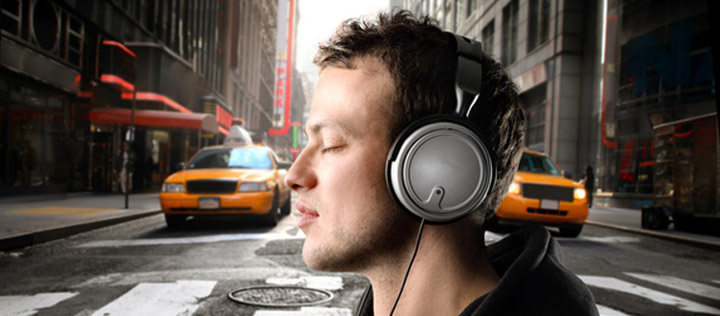
Also known as: Sound cancelling or sound isolating headphones
Noise cancelling headphones enable you to listen to audio, cancelling out any outside noise.
What’s the difference between noise cancelling and sound isolating headphones? Well, both reduce noise but they do it in different ways. Noise cancelling headphones use a microphones to identify outside noise and then use inverse waves to cancel it out, whereas sound isolating headphones simply work as a barrier to muffle outside noise.
Pros: Uninterrupted audio. Noise isn’t leaked to those nearby. They can double-up as earplugs – making them a fantastic option for long-haul flights.
Cons: If you’re using them while out and about, they can pose a safety hazard by limiting your awareness to dangers. The effectiveness of noise isolating headphones depends upon the how well the seal fits your ears.
Bluetooth headphones
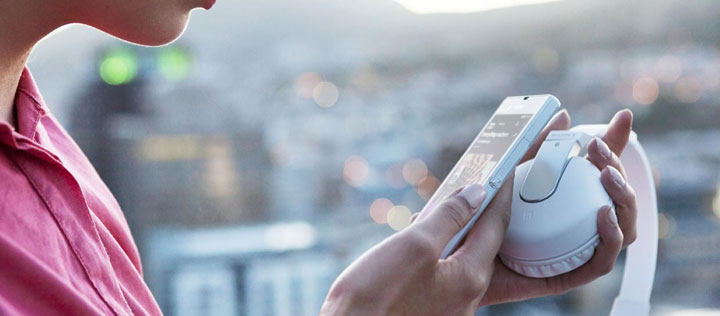
Bluetooth headphones usually feature a small microphone so that you can use them with your phone. They’re advantageous as you can keep your phone in your pocket and simply slip your headphones on in order to have a two-way conversation – something that’s particularly handy if you’re using the computer, cooking or doing sports.
Bluetooth headphones are available in various styles, including both on-ear and in-ear.
Pros: Enable you to talk on the phone and multi-task.
Cons: Sound quality is sacrificed during the data compression process.
Specs and sound quality
Getting a good balance
A pair of good quality headphones should balance the highs (treble), mids (vocals) and low (bass) frequencies to provide a clear, full audio.
Achieving perfect bass however can be a bit of an issue. So, if you’re all about that bass it’s worth considering purchasing full size headphones for a punchier sound. In-ear headphones struggle to compete in terms of bass, especially if they have a loose seal.
Sealed and open headphones
Sealed or closed headphones are typically available in the in-ear and full size styles. They seal in and block out sound so that outside noise is reduced and those in proximity to you can’t hear what you’re listening to.
In contrast the open headphones emit sound, so that those nearby can hear what you’re listening to – making open headphones less suitable for the office or study hall.
So that brings us to the end of our headphones buying guide!
Hopefully now you feel more clued up on the wonderful world of headphones, but as always if you’ve any questions please don’t hesitate to ask using the comments form below…
